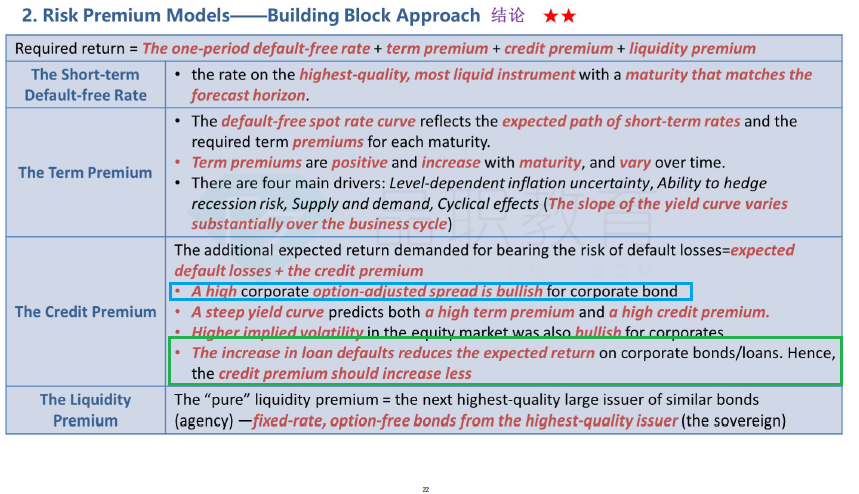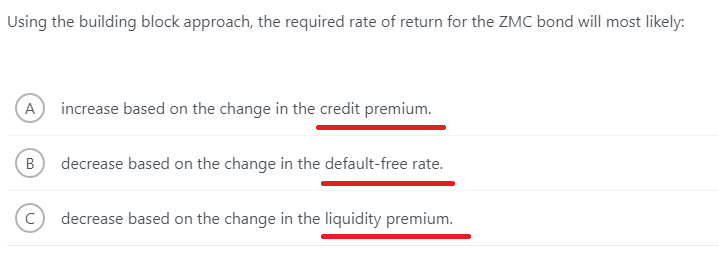NO.PZ202105270100000406
问题如下:
Using the building block approach, the required rate of return for the ZMC bond will most likely:
选项:
A.increase based on the change in the credit premium. B.decrease based on the change in the default-free rate. C.decrease based on the change in the liquidity premium.解释:
A is correct.
The credit premium is the additional expected return demanded for bearing the risk of default losses. A credit downgrade two steps lower will increase the credit premium and the required rate of return. The change in the default-free rate associated with the monetary tightening will increase (not decrease) the required rate of return. The widening of the spread between the sovereign bond and the next highest-quality government agency security indicates an increase in the liquidity premium, which will increase (not decrease) the required rate of return.
B is incorrect because the required rate of return would increase (not decrease) based on the change in the default-free rate associated with the monetary tightening.
C is incorrect because the rate of return would increase (not decrease) based on a change in the liquidity premium. The liquidity premium can be estimated from the yield spread between the highest-quality issuer (typically a sovereign bond) and the next highest-quality large issuer of similar bonds (often a government agency). A widening yield spread indicates an increase in the liquidity premium and required rate of return.
信用溢价是承担违约损失风险所要求的额外预期收益。信用评级再下调两级,将增加信用溢价和所需的回报率。与货币紧缩相关的无违约利率的变化将增加(而不是减少)所需的回报率。主权债券与第二高质量政府机构证券之间的息差不断扩大,表明流动性溢价上升,这将提高(而非降低)所需的回报率。
B是错误的,因为要求的回报率将增加(而不是减少)基于与货币紧缩相关的无违约利率的变化。
C是错误的,因为收益率会根据流动性溢价的变化而增加(而不是减少)。流动性溢价可以通过最优质的发行人(通常是主权债券)与次之的同类债券大型发行人(通常是政府机构)之间的收益率差来估计。利差的扩大表明流动性溢价和要求收益率的增加。
感觉这道题,required return会上升,是因为credit spread(事前概念)上升了吧,而不是credit premium,premium是事后概念-对应的是realized return,这个时候realized return应该是下降-credit premium下降






